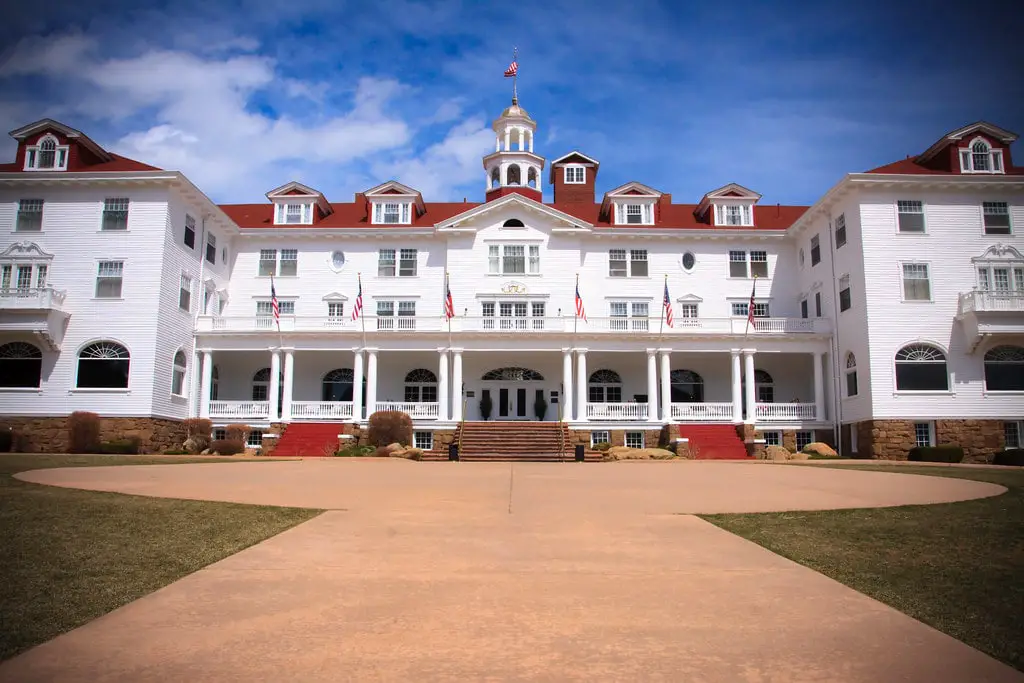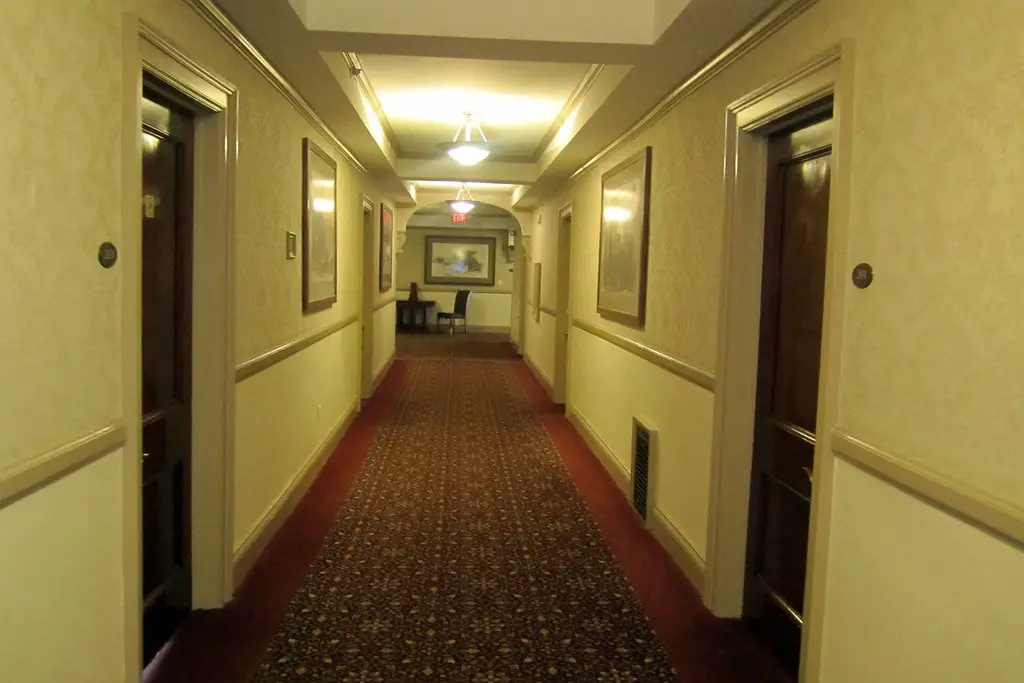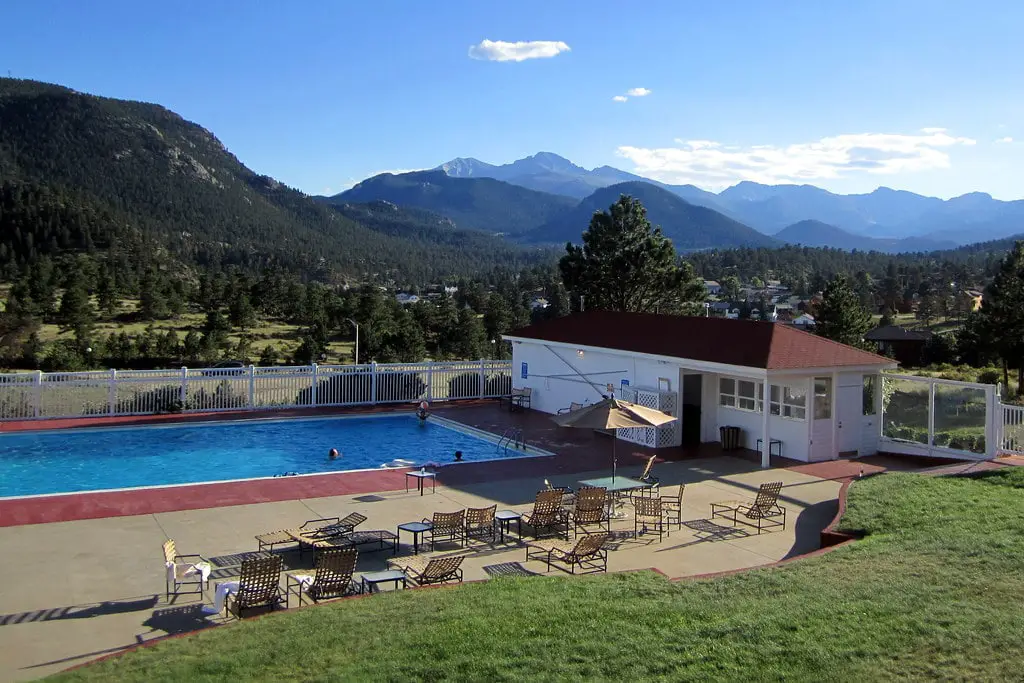The Origins of The Stanley Hotel
Nestled amidst the breathtaking landscape of Estes Park, Colorado, the Stanley Hotel stands tall as a testament to a bygone era.
The journey towards clean, dry air in the Rocky Mountains was driven by Freelan Oscar Stanley, the co-creator of the Stanley Motor Carriage Company, and his battle with health issues.
Stricken with tuberculosis in 1903, Stanley was advised to seek solace in Colorado's fresh air and sunlight.
His journey to recovery began in earnest, and as he regained his health, he fell in love with the beauty of Estes Park.
Stanley was so captivated by the beauty of Estes Park that he was determined to transform it into a prime resort destination.
He envisioned a grand hotel that would cater not only to the wealthy urbanites of his social circle back east but also to health-seekers like himself.
In 1907, the construction of the Stanley Hotel began, with a 48-room grand edifice taking shape on the picturesque landscape.
The site for the hotel was not selected at random. It was land previously owned by the 4th Earl of Dunraven, who had acquired it under the Homestead Act of 1862 provisions.
However, Stanley's name would ultimately grace the hotel following a successful petition signed by 180 people urging him to do so.
The Architecture and Innovations of The Stanley Hotel
The Stanley Hotel was a marvel of its time, a gleaming tower of Colonial Revival architecture that stood in stark contrast to the rugged beauty of the Rockies.
Its main building, concert hall, and Manor House were steel-frame structures on foundations of random rubble granite, clad in clapboard siding, and topped with asphalt shingle roofs.
The Stanley Hotel was built using locally sourced and imported materials.
The lumber came from Bierstadt Lake and Hidden Valley areas in the soon-to-be national park, and the granite was procured from the nearby Baldwin property.
Stanley was not just building a hotel but creating a beacon of modernity.
The Stanley Hotel was a pioneer in its time, being one of the first hotels in the nation to be entirely powered by electricity, from the illumination to the culinary facilities.
Every guest room had a telephone, and each pair shared an en suite bathroom with running water supplied by Black Canyon Creek.
This commitment to innovation was not without its challenges. In June 1911, a gas explosion damaged the structure and injured a maid, highlighting the delicate balance between progress and safety.

How the Stanley Hotel Inspired One of the Scariest Novels Ever
It's not every day that a hotel inspires a bestselling novel, but the Stanley Hotel isn't just any hotel. In 1974, Stephen King and his wife, Tabitha, sought respite and inspiration.
They found themselves in Estes Park, Colorado, as the last guests before the Stanley Hotel closed for the winter.
They didn't realize that their short stay would spark one of the most famous horror stories of all time - "The Shining."
As the tale goes, the couple checked into room 217, known for its spectral activities.
That night, King experienced a nightmare involving a fire hose chasing his three-year-old son down the hotel's corridors.
King woke up in a sweat, lit a cigarette, and by the time the smoke was finished, he had the bones of "The Shining" in his head.
But it wasn't just the nightmare or the room that inspired King. It was the hotel itself. The Stanley Hotel was vast, imposing, and eerily quiet due to the lack of other guests.
It had long, echoing hallways and a sense of isolation amplified by its location, nestled among the Colorado mountains.
The grand but empty hotel felt like a character waiting to be written, a place that held secrets and stories in its historic walls.
King used these elements to create the Overlook Hotel, the ominous and unforgettable setting of "The Shining."
Interestingly, while the Stanley Hotel inspired the novel, it was not used as a filming location for the 1980 Stanley Kubrick film adaptation.
Kubrick opted for the exteriors of the Timberline Lodge in Oregon instead.
However, the Stanley Hotel did become a filming location for the 1997 television miniseries "The Shining," bringing the story full circle.
Today, "The Shining" fans flock to the Stanley Hotel, eager to experience the place that started it all.
Room 217 is the most requested, and the hotel has embraced its ghostly reputation with nightly ghost tours and an annual horror film festival.
The Stanley Hotel remains an active part of Estes Park, a hotel that has transcended its role as a place to stay, becoming a place to experience.

Film Location and Venue at The Stanley Hotel
The Stanley Hotel has a rich film location and event venue history. Notably, it served as the setting for Danbury of Aspen, Colorado, in the 1994 film "Dumb and Dumber."
This comedic classic brought a different kind of fame to the hotel, showcasing its versatility as a filming location.
The hotel also connects significantly with Stephen King's "The Shining."
Dissatisfied with Stanley Kubrick's 1980 film adaptation, King produced a three-part miniseries based on his novel in 1997, which was filmed at The Stanley Hotel.
This miniseries brought King's vision closer to its original inspiration: the hotel.
From 2013 to 2015, The Stanley Hotel hosted the Stanley Film Festival, operated by the Denver Film Society.
This festival celebrated independent horror cinema with screenings, panels, and competitions. Although it went on hiatus in 2016 and was canceled in 2017, it marked the hotel as a significant venue in the film community.
Additionally, Bravo's "Top Chef" used The Stanley as a venue in Season 15, Episode 10, further highlighting the hotel's appeal as a location for diverse events.
Moreover, since 2014, the indie rock band Murder by Death has held annual winter concerts at The Stanley Hotel. These concerts add to the hotel's cultural offerings, attracting music enthusiasts to the historic venue.

The Stanley Hotel in the Modern-Day
Today, the Stanley Hotel is a modern destination, offering a restaurant, spa, and bed-and-breakfast while honoring its historic status.
The hotel's role in the growth of Estes Park and the creation of the Rocky Mountain National Park is undeniable.
The hotel and Stanley's involvement contributed significantly to the development of Estes Park, which was incorporated in 1917, and the establishment of the Rocky Mountain National Park in 1915.
The hotel's stunning panoramic views of Lake Estes, the Rockies, and Longs Peak continue to attract visitors.
Visitors to the Stanley Hotel today can enjoy modern amenities while immersing themselves in the rich history and captivating stories that make this hotel a unique destination.
Whether you're looking for a weekend getaway, a chance to explore the beautiful Rocky Mountains, or to experience the charm of a historic landmark, the Stanley Hotel offers something for everyone.
So, next time you're in Estes Park, why not step into a piece of history and make your memories at the Stanley Hotel?
